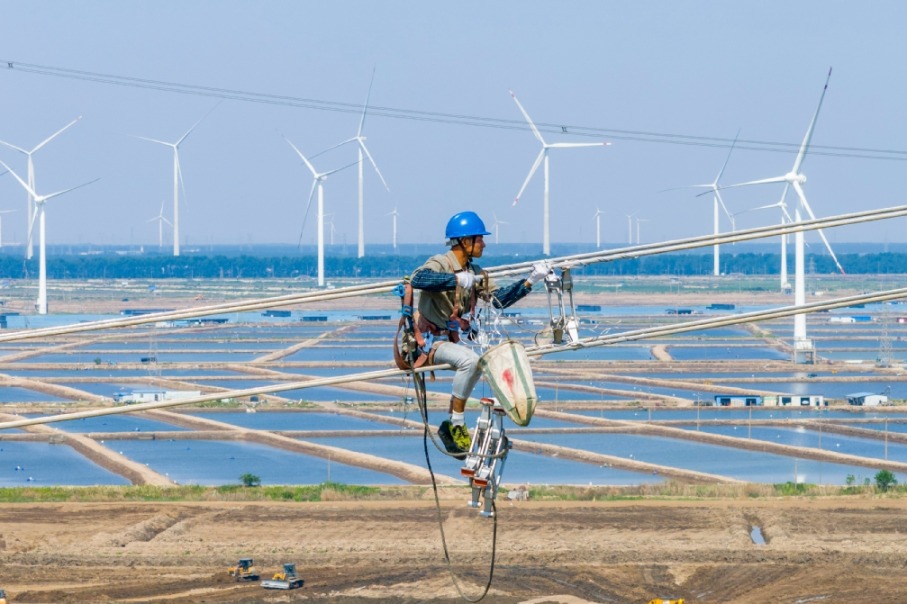Bite the bullet


Time for Guangdong's manufacturing industry to sit up and take stock
The labor market in China has undergone a sea change and moved from a surplus to a structural shortfall. The market is in transition and the demographic divides are fast shrinking.
There are clear indications that the demographic divide would be a thing of the past in the next 10 years. But for the moment it is the growing labor shortage that is worrisome.
In a telltale sign of the times, the number of students taking the national college entrance examination decreased by 400,000 in 2009. That in turn once again drives home the point that the shortage of workers in the Pearl River Delta and other regions are not just groundless rumors.
One of the reasons why the nation is facing such a problem is the fact that the workforce in the 19-22 age bracket has begun to decline sharply after hitting the 100 million mark in 2009.
There are also indications that the total labor force in China will shrink after it reaches 923 million in 2020.
Nowhere else would the impact be more than in Guangdong. The province has more than 30 million migrant workers and accounts for about 30 percent of China's foreign trade.
Spiraling land prices, rising labor costs, stricter energy conservation rules and emission reduction policies, and an appreciating yuan have all compounded Guangdong's woes.
The province faces challenges to retain its international competitiveness for its labor-intensive industries.
Prices of export goods - clothing, toys, shoes and plastic products - have risen to much higher levels despite a sharp decline in export volume during 2008 and 2009 because of the global financial crisis.
While it is certain that there will be a continued growth in export prices from Guangdong to Europe, labor-intensive products will be still competitive in the short term.
With the available workforce shrinking rapidly, things could reach a turning point when companies start relocating manufacturing operations to countries or regions that have abundant labor.
It will lead to a catastrophe in Guangdong if the transformation of the local development model remains slow and capital- and technology-intensive industries cannot be quickly developed in a short period.
But all is not lost. The province has already embarked on a series of measures to address labor anomalies. It has been tracking how to upgrade technology in the manufacturing industry and unveiled many policies aimed at fostering technology innovation.
Since 2003, the Guangdong and Hong Kong Special Administrative Region governments have launched a scheme to encourage collaboration between research institutions and industries in both areas.
The province has also constituted a technology innovation fund. Last year the fund had receipts in excess of 60 million yuan.
The province is also planning to relocate its industries to periphery areas or neighboring provinces even as it takes steps to relocate its countryside labor force to cities and towns. It also hopes to upgrade manufacturing technology.
By deciding to focus on high-end industries, Guangdong is also moving up the value chain and enhancing its innovation and industry competitiveness.
There are also plans to transform the province's economic development model to a technology and capital driven model rather than the present labor-driven model.
Labor woes will have little impact on European companies in Guangdong because a majority of these companies are engaged in capital- and technology-intensive businesses.
There is an ancient Chinese proverb that says, "toppling the nest makes no eggs." Likewise plans (by European companies) should be made to cope with the disappearance of the geographical divide.
European companies in Guangdong should be glued to China's policy changes and labor force market changes. They should actively undertake social responsibilities and take initiatives to protect employee interests. At the same time they should also be at the forefront to reduce carbon emissions.
With regard to labor shortage, the companies should also rethink their employment philosophy and expand the suitable age bracket to include 40-year old workers. They can also offer longer labor contracts and increase welfare benefits to have a stable workforce.
In the long run, however, European companies should take steps to spur the high-end of the industry chain.
The authors are researchers with the Guangdong Academy of Social Sciences.
Today's Top News
- China opposes any tariff deal made at its expense: commerce ministry
- Nepal's hydropower a climate change solution
- UN Charter still guiding compass of humankind
- Leaders pledge to strengthen Sino-Senegalese relations
- China, Ecuador to support each other's core interests
- Details on trade talks confirmed






























